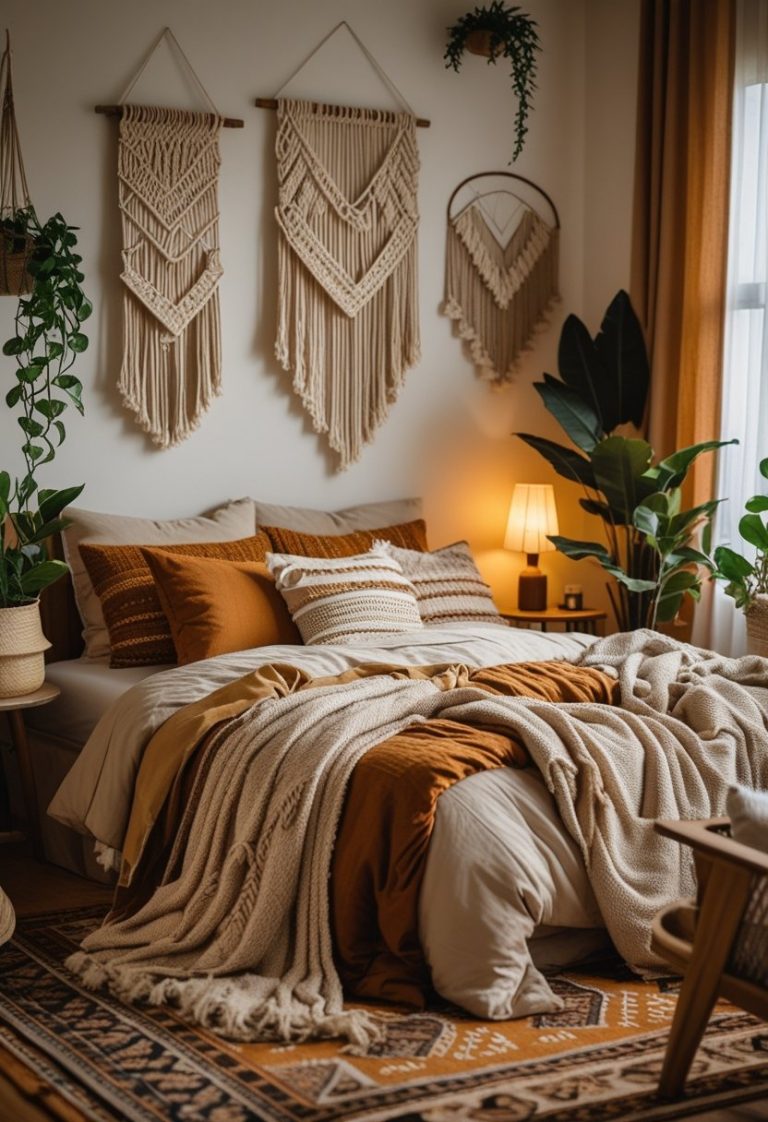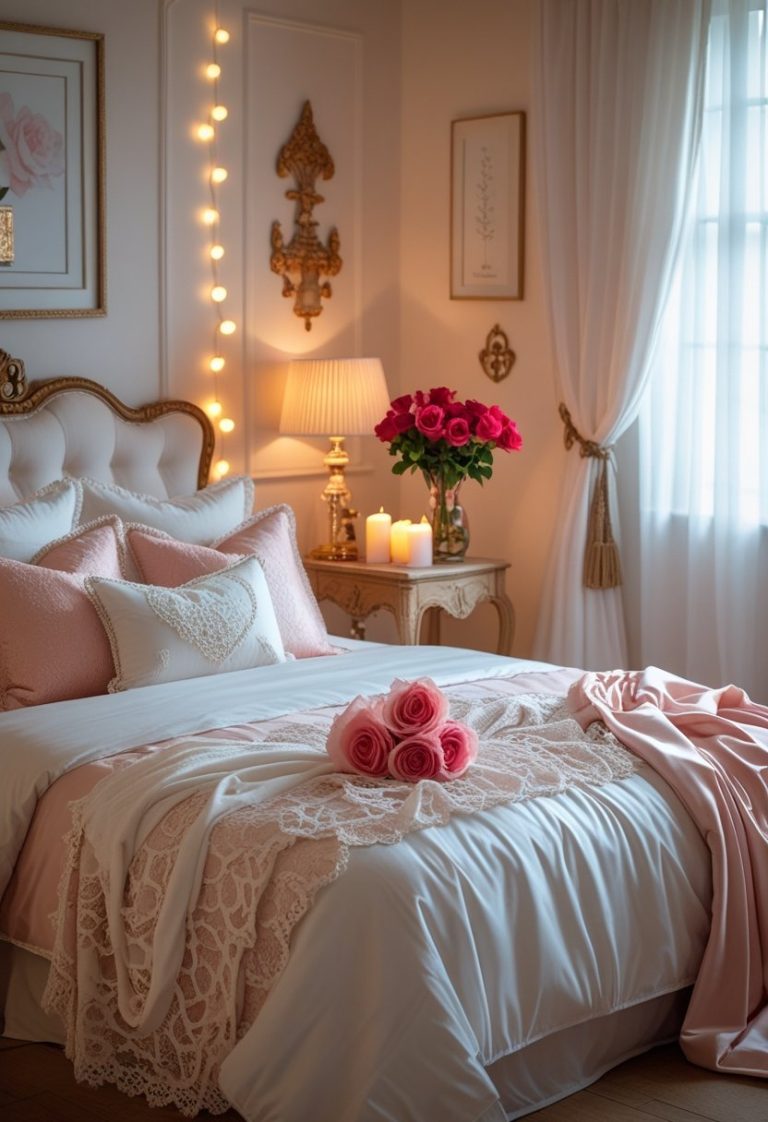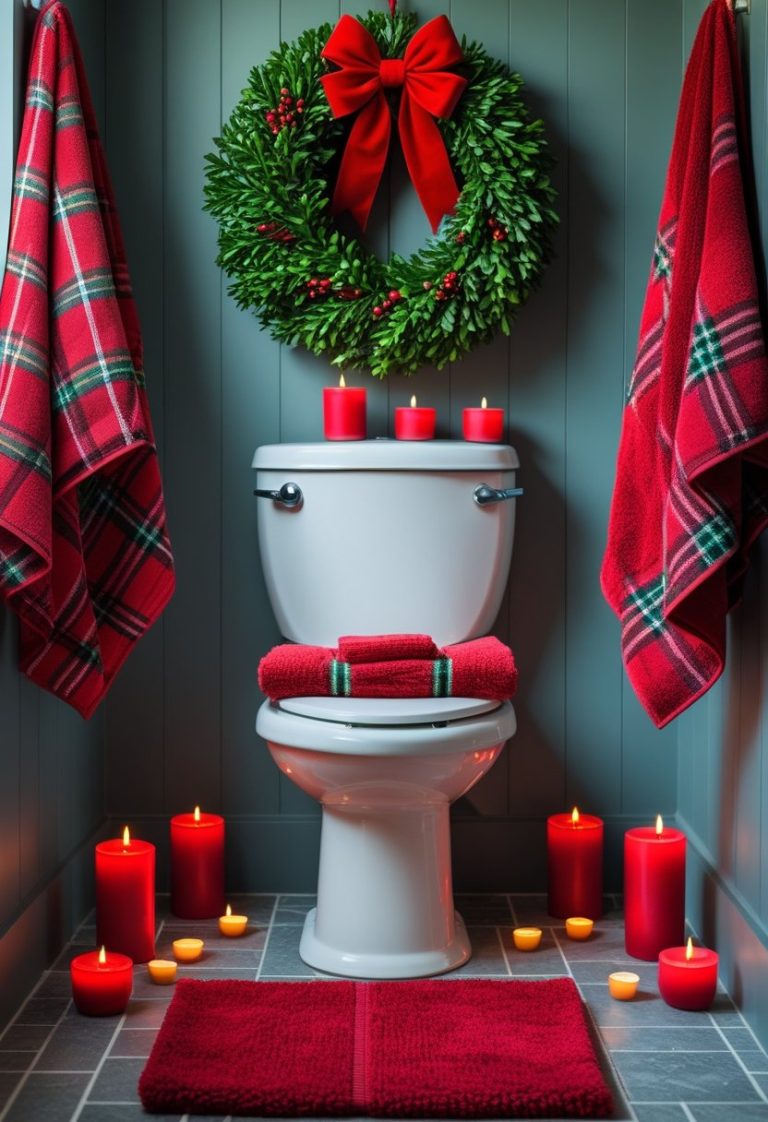Stunning Master Bedroom Makeover: Bright & Modern Look
A master bedroom makeover can completely change the feel of a home, turning a cluttered, outdated space into a bright and serene retreat. This transformation highlights how thoughtful design choices—like adding cozy textures, a bold accent wall, and curated décor—can make a major impact without overwhelming the space.

The key to this stunning makeover lies in balancing modern simplicity with warmth and personality, creating a space that is both stylish and comfortable. By focusing on organization and selecting elements that complement each other, the room feels open and inviting while still reflecting a unique sense of style.
This post offers practical insights and inspiration for anyone wanting to refresh their own bedroom. It shows that strategic updates and creativity can breathe new life into a space without requiring a complete overhaul.
Before the Makeover: Assessing a Cluttered and Outdated Master Bedroom

The master bedroom showed clear signs of neglect, featuring poorly planned storage, dated furnishings, and an overall lack of cohesion. It was essential to first analyze the specific issues with layout, décor, and lighting before beginning the makeover.
Identifying Common Design Challenges
The room suffered from clutter due to insufficient storage options, causing a crowded and disorganized feel. Outdated furniture pieces contributed to visual heaviness, and mismatched décor elements disrupted any sense of harmony.
Walls wore tired paint and generic artwork did little to enhance the ambiance. The overall style was unclear, leaning towards a haphazard mix that undercut comfort and function. Addressing these issues was critical to the bedroom transformation.
Evaluating Space and Layout
The layout limited movement and natural flow. Furniture placement blocked windows and pathways, reducing usable space. The bed was awkwardly positioned, far from ideal for optimizing room size or focal points.
Lack of dedicated storage meant clothes and accessories spilled into plain sight, intensifying visual clutter. The arrangement failed to create zones or areas for different needs, such as relaxation versus dressing. Redesigning to maximize floor area and usability was a priority for the master bedroom makeover.
Initial Mood and Lighting
The room felt dark and uninspiring, partly due to heavy curtains and limited natural light. Artificial lighting was sparse and ineffective, with only a central ceiling fixture that created harsh shadows.
The color scheme, dominated by dull neutrals, failed to invigorate the space or provide warmth. This lighting and mood imbalance made the room feel smaller and less inviting. Improving brightness and introducing layered lighting were key goals for the makeover.
Vision and Planning: Crafting a Clear Makeover Strategy

A successful master bedroom makeover begins with a focused plan that defines specific outcomes for the space. Key decisions involve identifying a clear design goal, selecting a color palette that enhances mood and light, and choosing furnishings that balance style with comfort. These foundational elements guide the transformation, ensuring the room evolves cohesively and purposefully.
Setting a Design Goal
The first step in the bedroom makeover involves articulating a precise design goal. This goal should reflect how the space will be used and the atmosphere desired. For example, transforming a cluttered room into a serene retreat requires prioritizing simplicity and calm.
Clear goals might include improving functionality by adding storage solutions or enhancing natural light to make the room feel brighter. Considering existing architecture helps avoid choices that clash with the room’s character. Defining priorities like maximizing relaxation or creating a sophisticated look directs every subsequent decision, streamlining the makeover process and preventing impulsive changes.
Choosing a New Color Palette
Selecting a color palette is critical in changing the room’s overall ambiance. For a bright, modern look, light neutral tones combined with a bold accent wall often work well. Whites, soft grays, and beiges can open the space mentally and visually.
Accent walls can inject personality while maintaining calmness, such as using deep blue or forest green. Attention should be given to how colors interact with natural light throughout the day. Coordinating wall colors with textiles and décor avoids visual discord and reinforces the intended mood.
Selecting Modern Furnishings
Furnishings define both style and comfort in a master bedroom makeover. Modern, streamlined furniture with clean lines supports a contemporary aesthetic and reduces visual clutter. Multipurpose pieces, like beds with built-in storage or minimalist nightstands, add functionality.
Choosing cozy textures, such as a soft rug or plush bedding, balances the modern look by adding warmth. Furniture scale must fit the room size to preserve openness while meeting comfort needs. Carefully curated décor, including lamps and artwork, should complement the furniture and color scheme for a unified, inviting space.
Transformative Design Elements: From Dark and Dated to Light and Serene

The master bedroom makeover focuses on replacing heavy, outdated features with a lighter color palette and modern touches that open the space. Key strategies include enhancing visual interest with a bold accent wall, upgrading lighting to improve brightness and atmosphere, and optimizing natural light to promote calmness.
Implementing a Bold Accent Wall
The accent wall introduces a definitive focal point that breaks up the room’s neutrality without overwhelming it. Choosing a deep but muted hue—such as navy or charcoal—adds depth and contrast against lighter walls, reinforcing the serene atmosphere.
Texture plays a key role. Using matte or slightly textured paint finishes can prevent glare and add subtle sophistication. The accent wall often frames the bed, anchoring it visually and enhancing the overall layout’s cohesion.
This choice elevates the space from bland to modern, providing personality while complementing soft bedding and simple décor. It balances boldness with subtlety, critical for a bedroom setting that aims to remain tranquil.
Integrating Modern Lighting Fixtures
Lighting upgrades are central to the transformation, shifting away from bulky, outdated fixtures to sleek, functional pieces. Pendant lights are a popular choice over bedside tables, offering focused illumination without sacrificing surface space.
These fixtures add architectural interest and can be selected to support dimmable features, allowing users to adjust brightness for different moods. Layered lighting, involving ambient, task, and accent sources, ensures flexibility throughout the day.
Modern lighting fixtures also optimize the room’s clean lines and contribute to the airy, open feeling. Their design often complements the accent wall and chosen color scheme, tying various elements together cohesively.
Maximizing Natural Light
Maximizing natural light changes the room’s entire ambiance, replacing darkness with brightness and emphasizing openness. Window treatments are essential—sheer curtains or blinds that filter light without blocking it help maintain privacy while allowing sunlight in.
Rearranging furniture to avoid light obstruction enhances sun exposure during the day. Light-reflecting surfaces and finishes, like glossy side tables or pale flooring, further amplify natural light effects.
This approach connects the bedroom with the outside environment, promoting a healthy, calming atmosphere that underscores the serene goal of the makeover.
Textiles and Underfoot Comfort: Rugs, Bedding, and Cozy Layers

The transformation uses textiles strategically to enhance comfort and style. Carefully chosen rugs and layered bedding introduce texture and warmth that complement the sleek, modern design. These elements make the space inviting and balanced.
Incorporating a Patterned Rug
A patterned rug anchors the master bedroom by defining the area while adding visual interest. It breaks up the neutral tones with subtle colors or geometric designs, providing a focal point without overwhelming the room.
In this makeover, an area rug made from natural fibers offers softness underfoot and durability. The pattern enhances the style theme and ties together the furniture and décor. Proper sizing ensures the rug fits well beneath the bed, extending comfortably on all sides to create a cohesive look.
Layering Textures with Throws and Bedding
The bedding features multiple layers combining different textures, such as a high-thread-count sheet set, a plush duvet, and woven throws. This layering approach adds depth and comfort while maintaining a clean, modern aesthetic.
Throws and pillows introduce complementary materials like linen, wool, or cotton. Their textures contrast with the smooth bedding, creating tactile interest. The thoughtful mix of patterns and solids keeps the space from feeling flat, resulting in a cozy, personalized retreat.
Creating a Restful Atmosphere: Reading Nooks and Relaxation Zones

A well-designed resting area enhances the master bedroom’s function as a sanctuary. It incorporates comfortable seating, appropriate lighting, and organized spaces that promote calm and encourage unwinding.
Designing a Cozy Reading Nook
A cozy reading nook requires a dedicated corner with ample natural light or warm task lighting. Using a comfortable chair or cushioned window seat paired with soft throw pillows creates a welcoming spot.
Storage nearby is essential. Bookshelves or baskets keep reading materials organized and accessible without adding clutter. A small side table or tray holds essentials like reading glasses or a cup of tea.
Textiles such as a plush rug or blanket add softness and warmth. Neutral tones with occasional bold color accents help maintain a serene atmosphere while giving character to the space.
Furniture Arrangement for Calm
Furniture placement should support both relaxation and movement flow. Position seating away from bedroom doors or busy walkways to minimize distractions.
A layout that faces a window or a calm focal point, like an accent wall, strengthens the room’s tranquil feel. Combining functional pieces like an ottoman or side table keeps essentials close without overcrowding.
Decluttered surfaces and strategically placed storage units balance aesthetics and usability, preventing the space from feeling crowded while reinforcing a restful mood.
Curating Décor and Final Touches for a Personalized Sanctuary

The final details in a bedroom makeover bring cohesion and personality to the space. Thoughtful choices in art, décor, and practical items enhance both the style and function of the room without overwhelming it.
Selecting Art and Decorative Accents
Choosing art and accents that speak to personal taste is essential. Pieces should complement the room’s color palette and design style while adding visual interest. For example, a bold accent wall pairs well with minimalistic, framed artwork or a statement mirror to keep focus balanced.
Incorporating meaningful items such as photographs or unique sculptures helps personalize the space. Textured pillows, throws, or rugs introduce warmth and comfort while contributing to the visual layers. Avoid clutter by limiting décor to a few well-chosen objects that support the calm, modern atmosphere of the makeover.
Balancing Practicality with Style
Function should not be sacrificed for appearance in a bedroom redesign. Storage solutions like under-bed drawers or multi-functional furniture keep clutter out of sight, maintaining a clean, serene environment.
Lighting options with adjustable brightness increase comfort and versatility for different activities, from reading to relaxation. Durable yet attractive materials ensure the room remains inviting and functional long term. Simple organizational tools, such as trays or decorative boxes, keep essentials accessible without disrupting the curated aesthetic.
Before and After: The Dramatic Reveal and Key Takeaways

This master bedroom makeover highlights a shift from clutter and dated elements to a bright, modern space. Key changes include thoughtful furniture placement, a bold accent wall, and the use of layered lighting, which together enhance serenity and function.
Summary of Transformation
The before bedroom was cluttered, with mismatched pieces and dull colors that made the space feel cramped and outdated. After the makeover, the room showcases clean lines and a cohesive color palette centered around soft neutrals and a statement accent wall.
Textured fabrics like velvet and layered lighting add depth and comfort. The transformation also involved decluttering and optimizing storage, which opened up the room and improved flow.
The master bedroom makeover strikes a balance between style and practicality, creating a space that looks inviting and functions well for daily use.
Practical Tips for Your Own Bedroom Makeover
Start by removing unnecessary items to clear visual space. Use neutral base colors to create a calm backdrop, then add character with one bold accent wall or unique décor pieces.
Incorporate cozy textures, such as layered rugs, velvet cushions, or soft throws, to make the room feel more comfortable. Utilize multiple light sources—ambient, task, and accent lighting—to enhance both functionality and mood.
Finally, invest time in choosing furniture that fits the scale of the room and offers storage options. This approach can turn any cluttered or outdated bedroom into a bright, modern retreat.

Ana Luisa
Explore in-depth biographies, net worth insights, and exclusive updates on your favorite singers at Trionua.com. Discover the journeys, achievements, and latest news about music’s biggest stars.






